Happy Sunday! I for one am hoping that in between writing this and posting it on Sunday there is a decided change in the weather and it is a little less less arctic tundra and more spring time in Paris. That might be asking a lot, considering it is still January after all, but the cold has got my mind watering to nicer places and nicer climates. It has also made me go in search of comfort and to me this week that meant custard. Someone on the radio reminded me of a childhood dessert I used to love, simply custard and sliced banana, and I couldn’t shake the idea of custard from my mind. The form of the custard, a tart in this case, came to mind because I was thinking about a friends upcoming book launch in Paris (my wonderful friend Jane from La Cuisine in Paris has written an autobiography called The French Ingredient, all about moving to Paris and opening a cookery school, it’s out in April) and I knew what I needed to make, Flan Parisien.
This dish, which confusingly also goes by Flan Boulanger and Flan Patissier is the French take on the custard tart. Unlike a British custard tart which is an egg thickened custard the French is a starch thickened custard, this is the same difference between a creme anglaise and a pastry cream. A British custard tart is a more delicate thing, a wobbly just set custard made with lots of egg yolks. The French version is made with both eggs and starch, in this case cornflour, which results in a firmer set, something a bit more rustic with more substance. The British version is baked at a low temperature to ensure a silky smooth custard and because of that it takes on no added colour. The French version is baked relatively hot and for a surprisingly long time, which adds a caramelised top which makes it resemble a Basque cheesecake. Both versions are relatively simple to make but the French version is a little more foolproof and that is entirely down to the roll the starch plays.
With a regular custard it is very easy to overbake it, resulting in either a split mixture or a set custard with a big crack down the middle. Starch has a magical ability to prevent all of this. The starch slows down coagulation making the eggs less prone to overcooking and curdling. This is why a pastry cream can be cooked at high heat with no issues but a simple custard has to cooked at very low temperatures and watched like a hawk, lest it turn quickly into scrambled egg.
To make the perfect Flan Parisien you can go about things a few different ways, you can make the pastry and fill it with the custard and bake it, no blind baking needed, everything goes into the oven together. I have done that many times and it works but there is definitely a major drawback. It’s not soggy bottoms it’s underbaked, pale pastry. When you skip the blind baking the pastry doesn’t get the chance to brown properly and it will inevitably take on a little moisture from the custard, this results in an insipid pastry that is a bit pasty. Now, many bakeries bake their flan using this method and I know there are people that actually like their pastry like this but for me I want the pastry well baked, golden and with some crispness. To do this, a simple blind bake is all that is required, it gives the pastry a head start and ensures a finished flan with crisp golden pastry.
If you are a paid subscriber todays Second Helpings takes this classic vanilla flan Parisian and turns it into a caramel and hazelnut flan parisien. Subscribe to get access to this recipe and the entire back catalogue of Second Helpings recipes.
Flan Parisian
Serves 10
225g plain flour
2 tbsp icing sugar
1/2 tsp fine sea salt
120g unsalted butter, diced and chilled
3 tbsp ice cold water
Vanilla Custard
700ml whole milk
200ml double cream
Seeds scraped from 1 vanilla pod
3 large eggs
3 large egg yolks
175g caster sugar
75g cornflour
25g unsalted butter, diced
To make the pastry add the flour, sugar and salt to the bowl of a food processor and pulse a few times to combine. Add the diced butter and pulse until the mixture looks like breadcrumbs. Add the water and pulse until the mixture just starts clumping together (if the pastry is dry add more water, a little at a time). Tip the pastry mixture out onto the work surface and use your hands to bring together as a uniform dough.
If making the pastry by hand add the flour, sugar and salt to a large bowl and mix together. Add the diced butter and toss to combine and coat in flour. Rub the butter into the flour mixture until it resembles breadcrumbs. Drizzle in the water and stir in to combine. Enough water is added when you can squeeze a little of the mixture in your hand and it holds together and doesn’t crumble apart. Tip the mixture out onto the work surface and bring together as a uniform dough.
Cut the dough into two equally sized pieces. Form one half into a round and the other into a rectangular shape. Wrap both pieces in clingfilm and refrigerate for at least an hour before using. If you have time to rest the pastry longer an overnight rest will make the pastry a little easier to roll out and less prone to cracking.
For the custard add the milk and cream to a large saucepan and add in the vanilla seeds scraped out of a vanilla pod along with the spent pod itself. Add half of the sugar to the pan and then place over medium heat and bring to a simmer, giving the occasional stir. Remove the pan and set aside for an hour to infuse. After an hour, remove the spent vanilla pod and place the pan back on the heat and bring back to a simmer. Meanwhile add the remaining sugar and cornstarch to a large bowl and whisk to combine. Add the eggs and yolks and whisk until the mixture is smooth and there are no lumps of cornstarch. When the milk is at temperature pour over the egg mixture, whisking as you pour. Pour the custard mixture back into the pan and place back over the heat. Whisking constantly, cook until the custard has thickened and started bubbling. Whisking for 30 seconds more and then scrape the custard into a large bowl. Add the butter and stir to combine. Once smooth, press a sheet of clingfilm onto the surface of the custard, to ensure no skin develops. Allow to cool at room temperature for an hour before transferring to the fridge, leaving in there until needed.
To assemble the tart you need an 8 inch pastry ring or an 8 inch springform cake pan (it should be 6cm tall). Lightly grease your vessel of choice and set onto a parchment lined baking tray. Take the rectangular piece of pastry and roll out into a rectangle, slightly larger than 12x34cm and then trim to size. Cut into two long rectangles, each 6cm wide. Use these two long strips of pastry to line the sides of the baking vessel. Where the pastry overlaps, brush the join with a little egg white to ensure they stay glued together and then press to seal. With the second piece of pastry roll into a circle slightly larger than the baking vessel and then use the pastry ring or springform pan as a template to cut out a disc of pastry, 20cm in diameter. Brush the bottom edge of the flan walls, where it sits on the baking tray, with a little egg white and then carefully drape this disc into the lined pastry ring, pressing on the seam to join the base to the walls. Refrigerate the flan case for an hour before baking.
Preheat the oven to 200ºC (180ºC Fan) and line the flan case with a large piece of crumpled parchment paper. Fill the flan case with baking beans and then bake for 25 minutes. Lift the flan case from the oven and use the parchment to very carefully remove the baking beans. Place the case back into the oven for 5-10 minutes at which point the case should have a little colour on the inside. Remove and set aside to cool for 10 minutes. Reduce the oven temperature to 180ºC (160ºC Fan).
Remove the custard from the fridge and give a thorough whisking until smooth and lump free (you can also give it a helping hand by using a hand blender if you like). Scrape the custard into the flan case and spread into an even layer. The custard makes enough to fill the flan case almost to the top, leaving around 1cm of headroom. If your pastry has shrunk at all only add enough custard to leave that same headroom. Bake the flan for about 50-60 minutes or until the custard is browned but still has a bit of a wobble. Remove and set aside for an hour at room temperature before transferring to the fridge for at least 4 hours.
The tart will keep for about 3 days. If you want to serve this as a dessert it goes wonderfully with poached rhubarb.

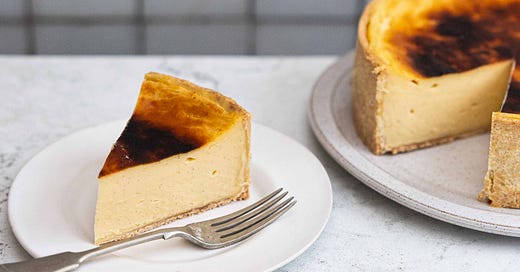



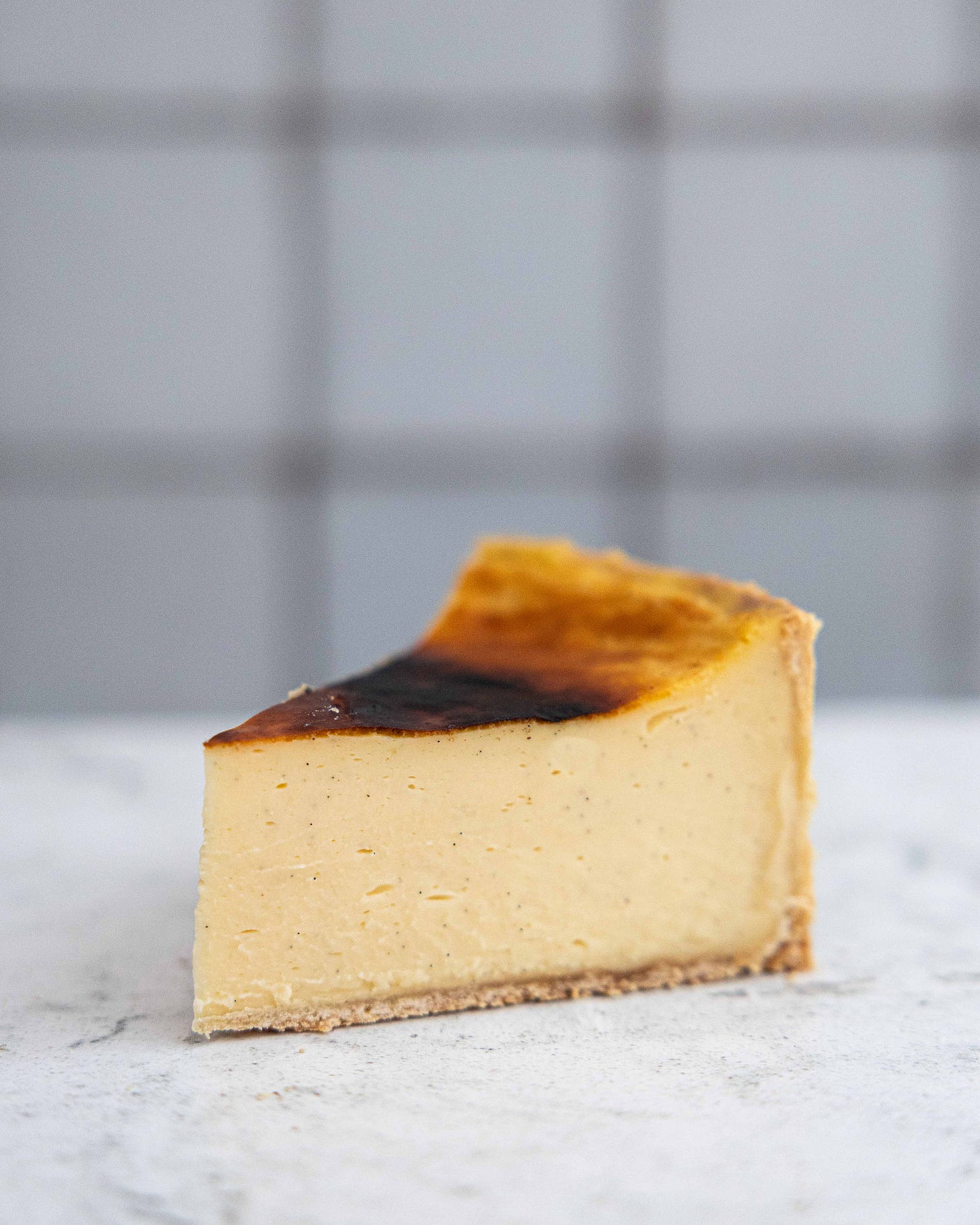
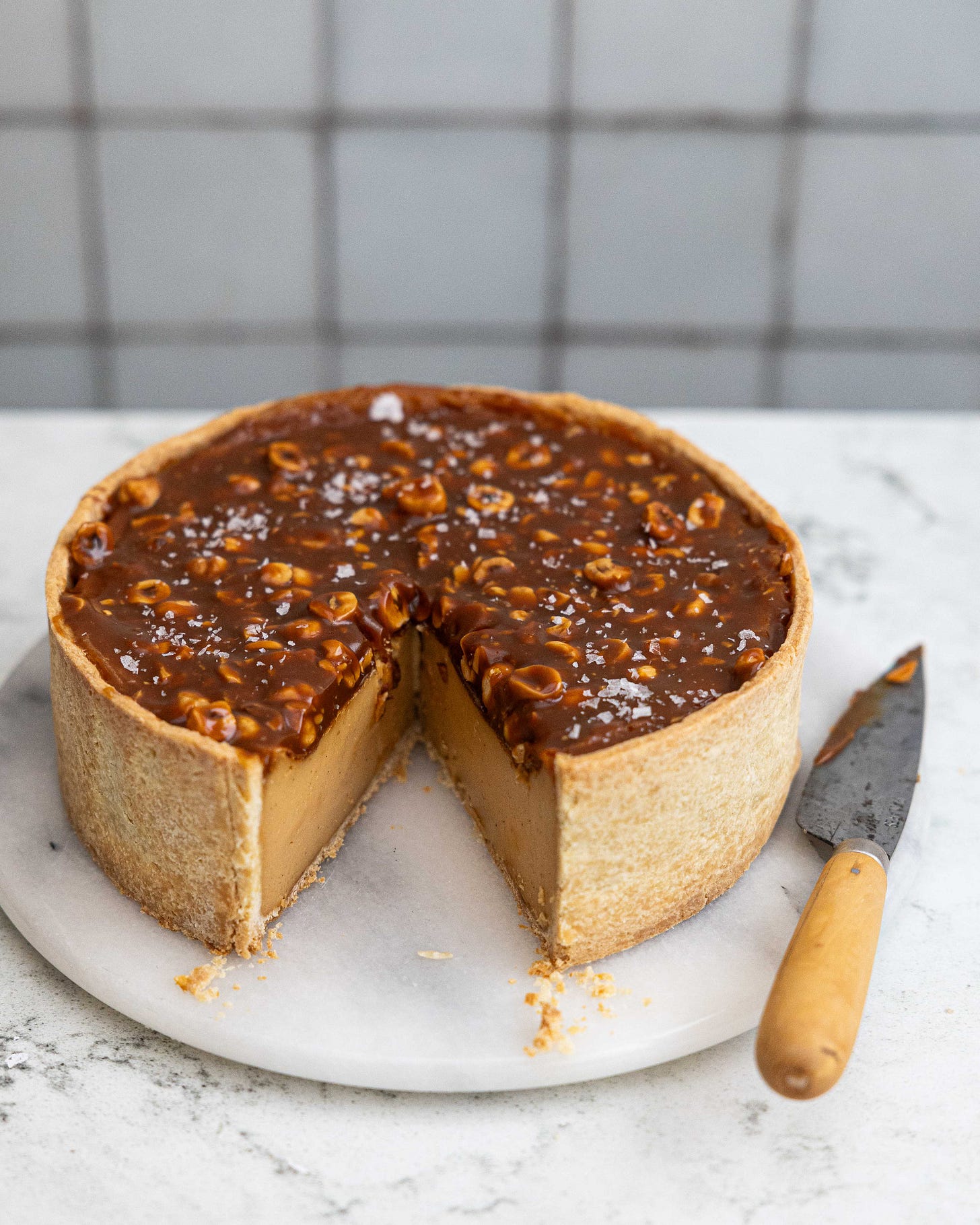
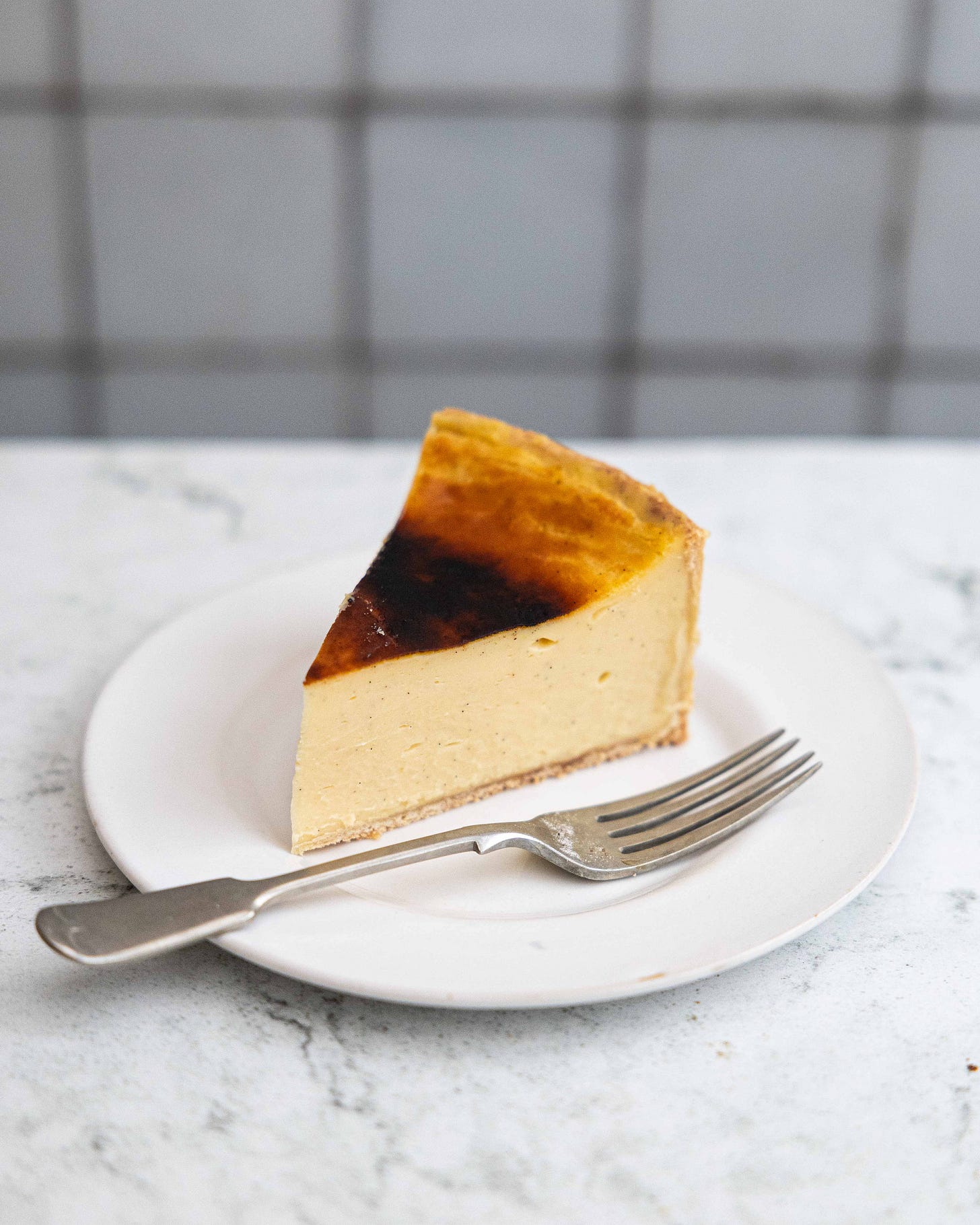
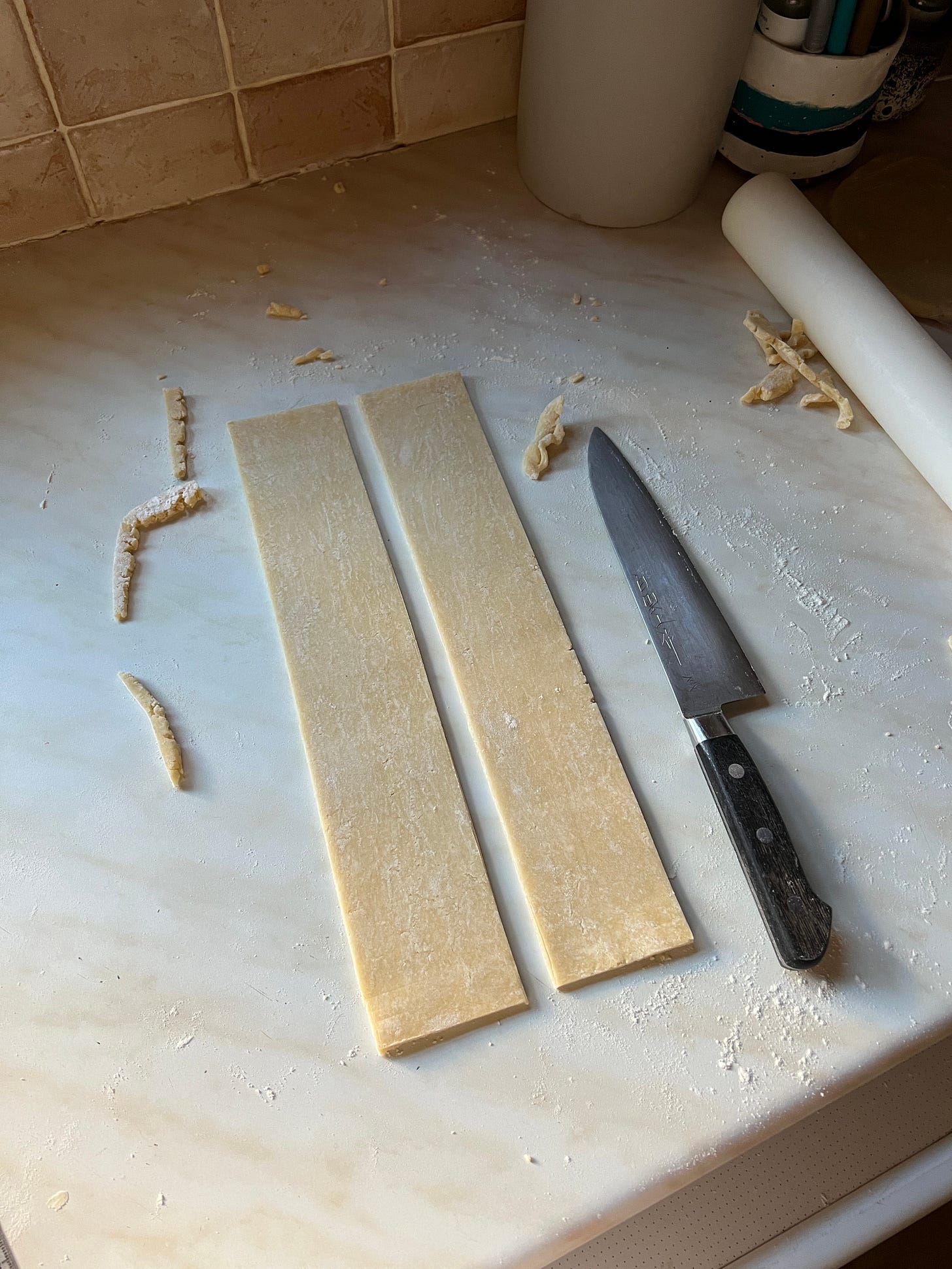
love the toasted, basque-cheesecake-looking top.